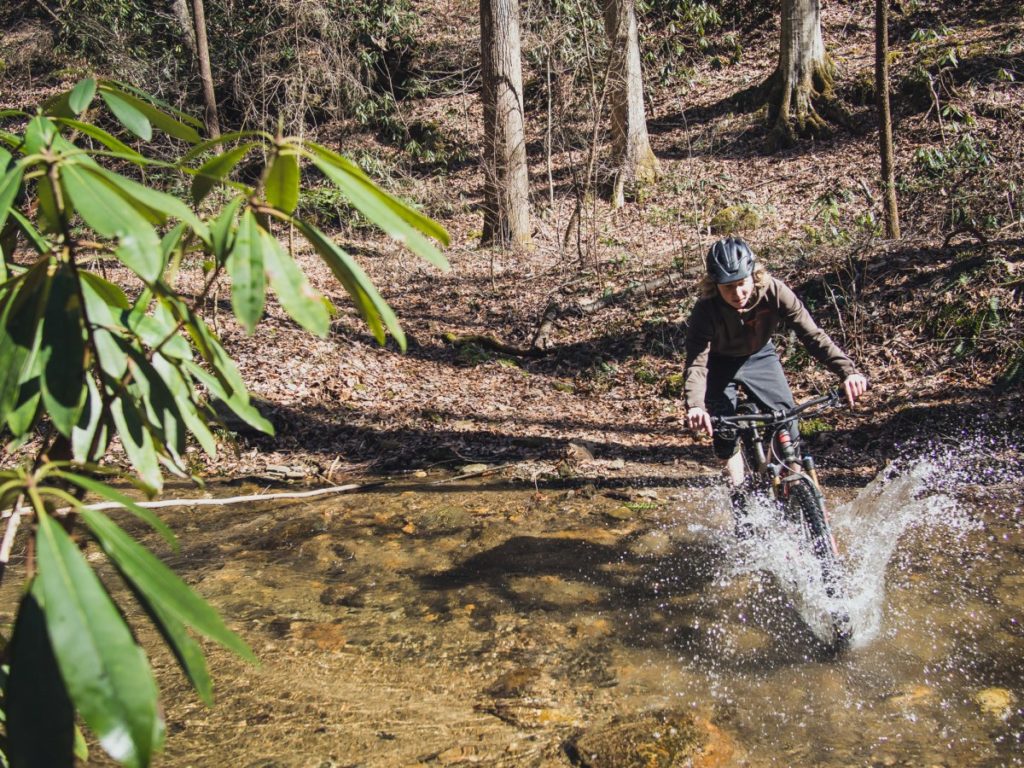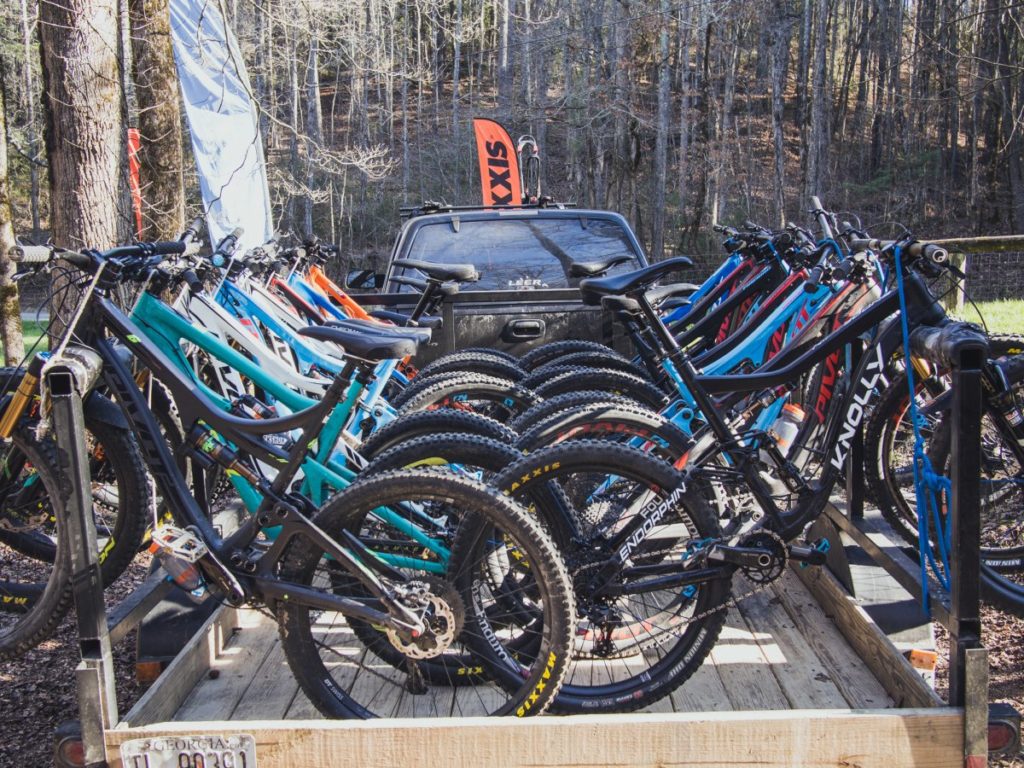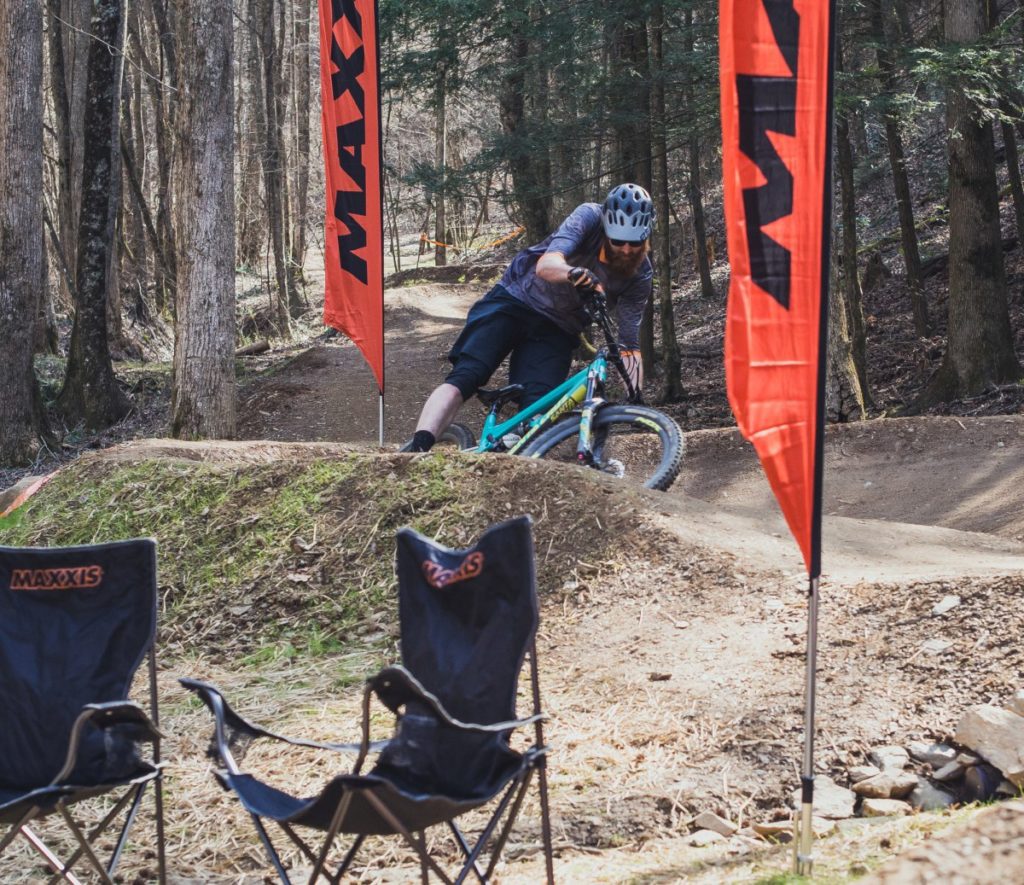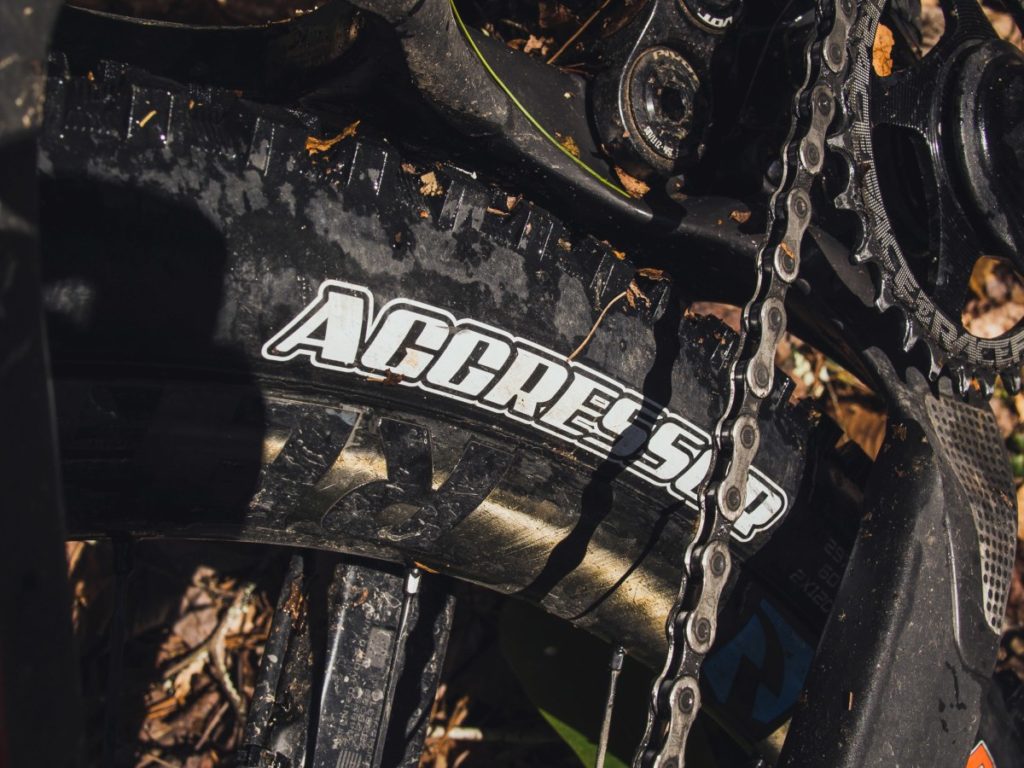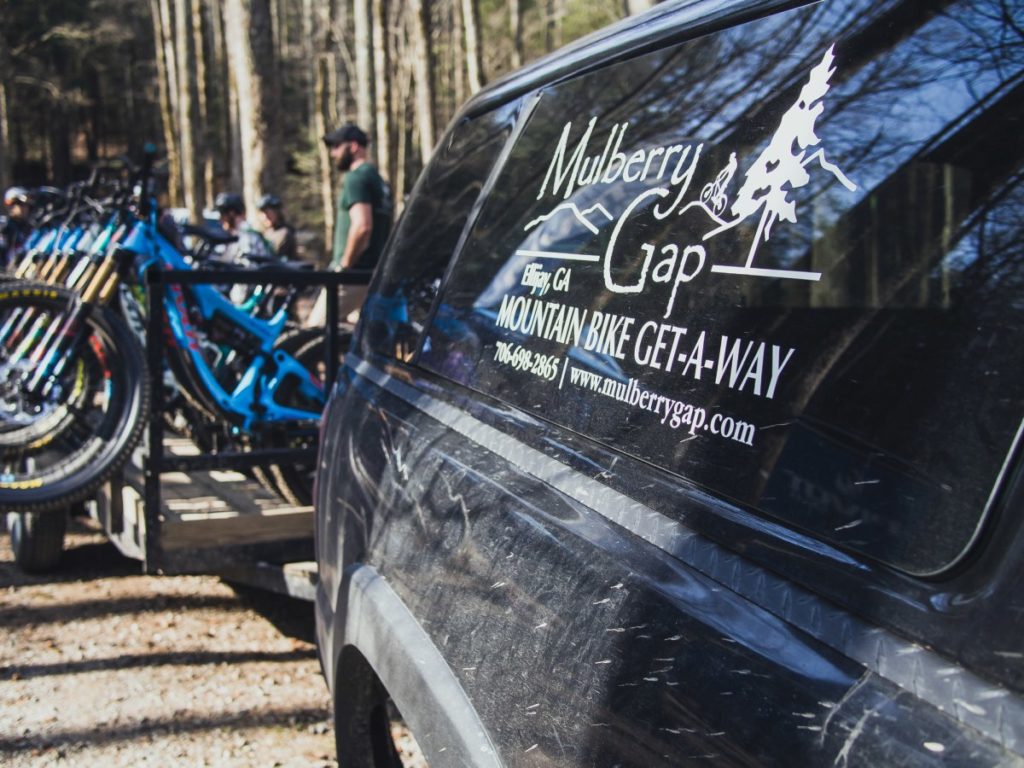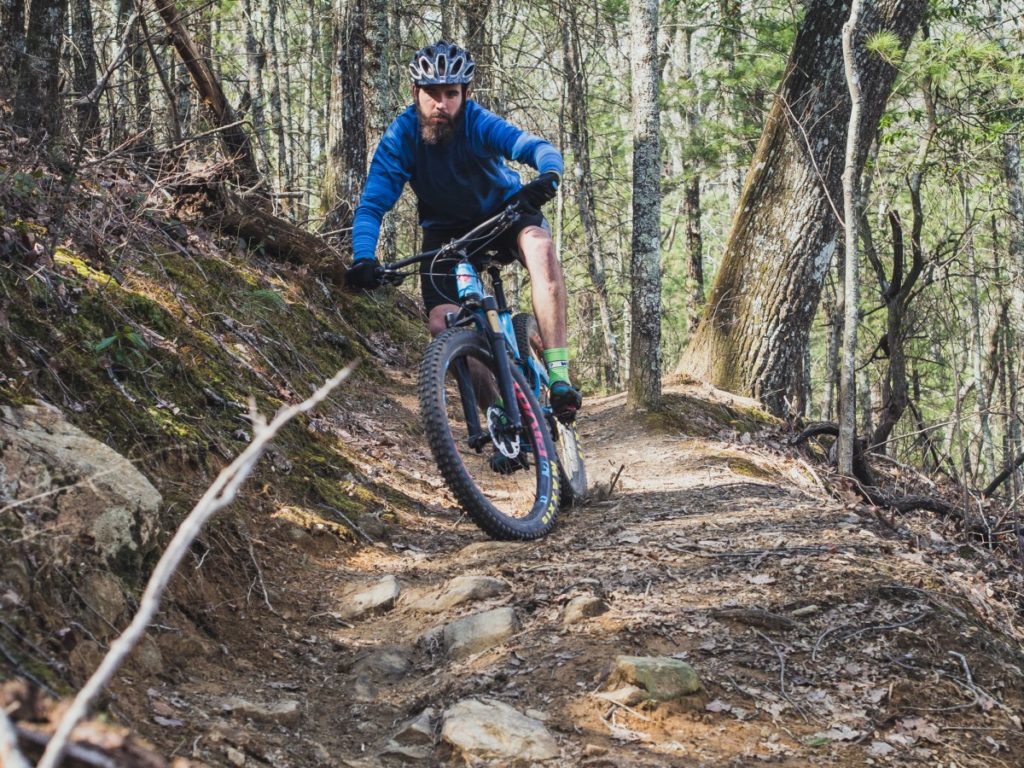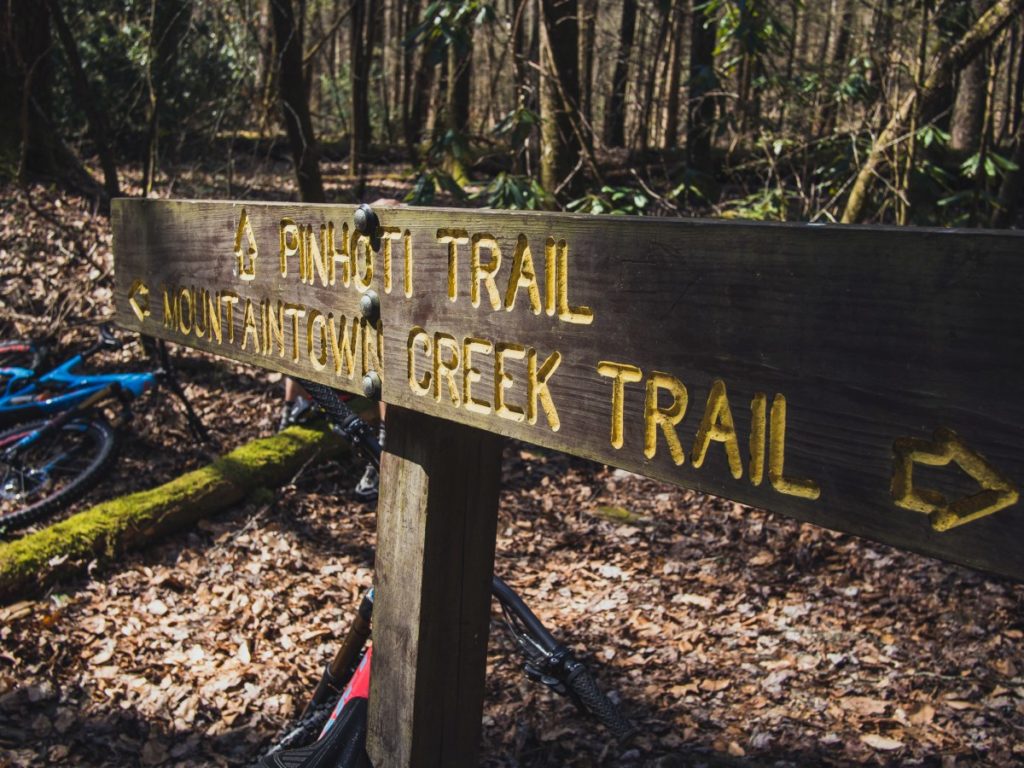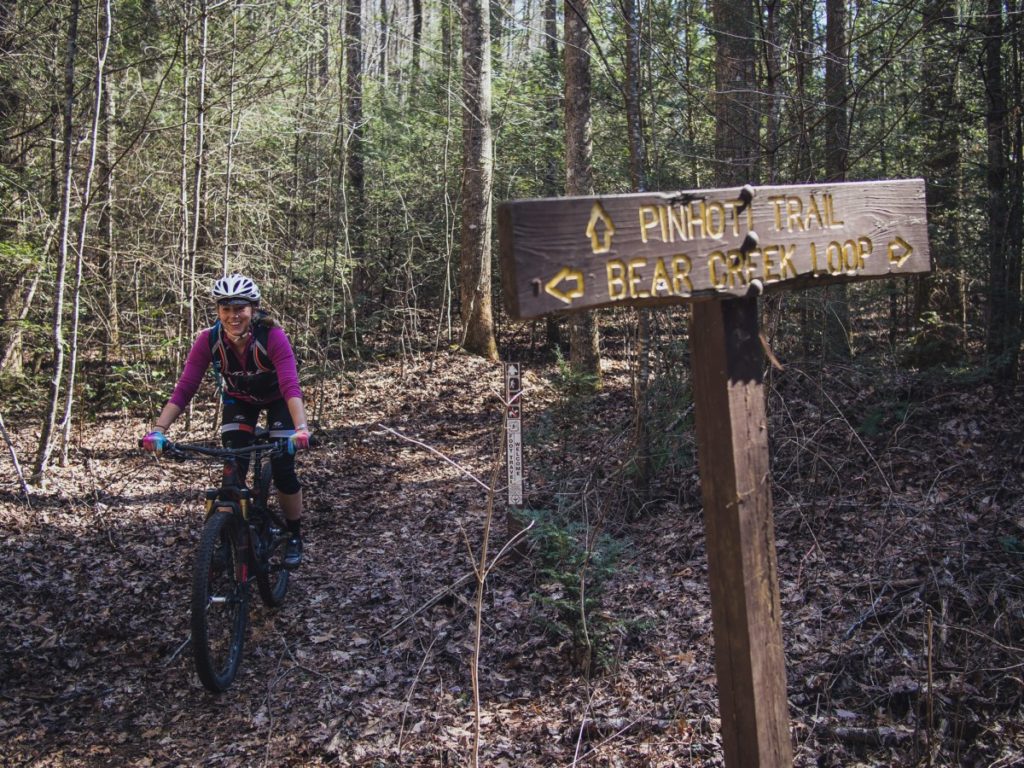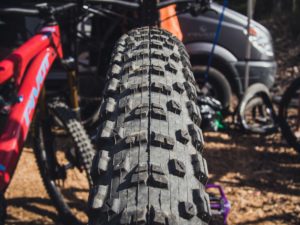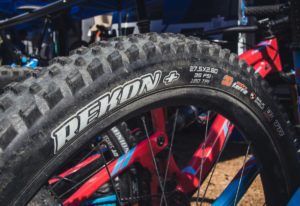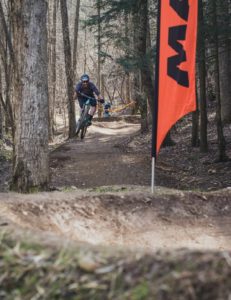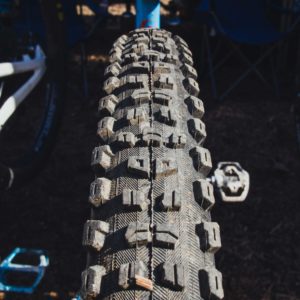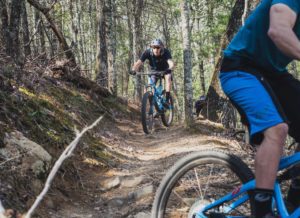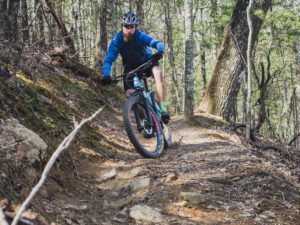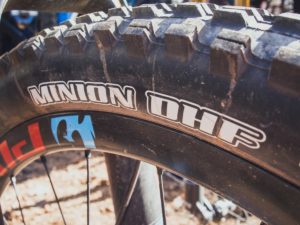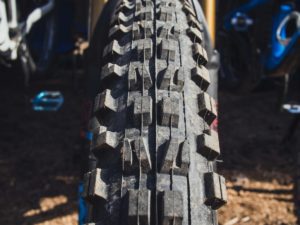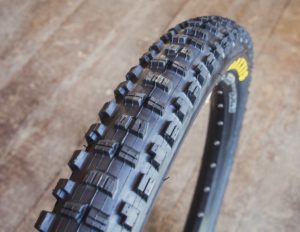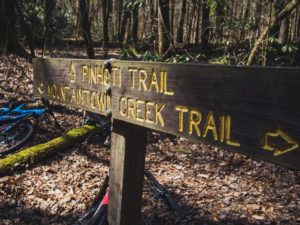Jumping fires, and testing Maxxis tires, at the Mulberry Gap
Plus-size tires and treads for wider rim widths on the trails of Georgia
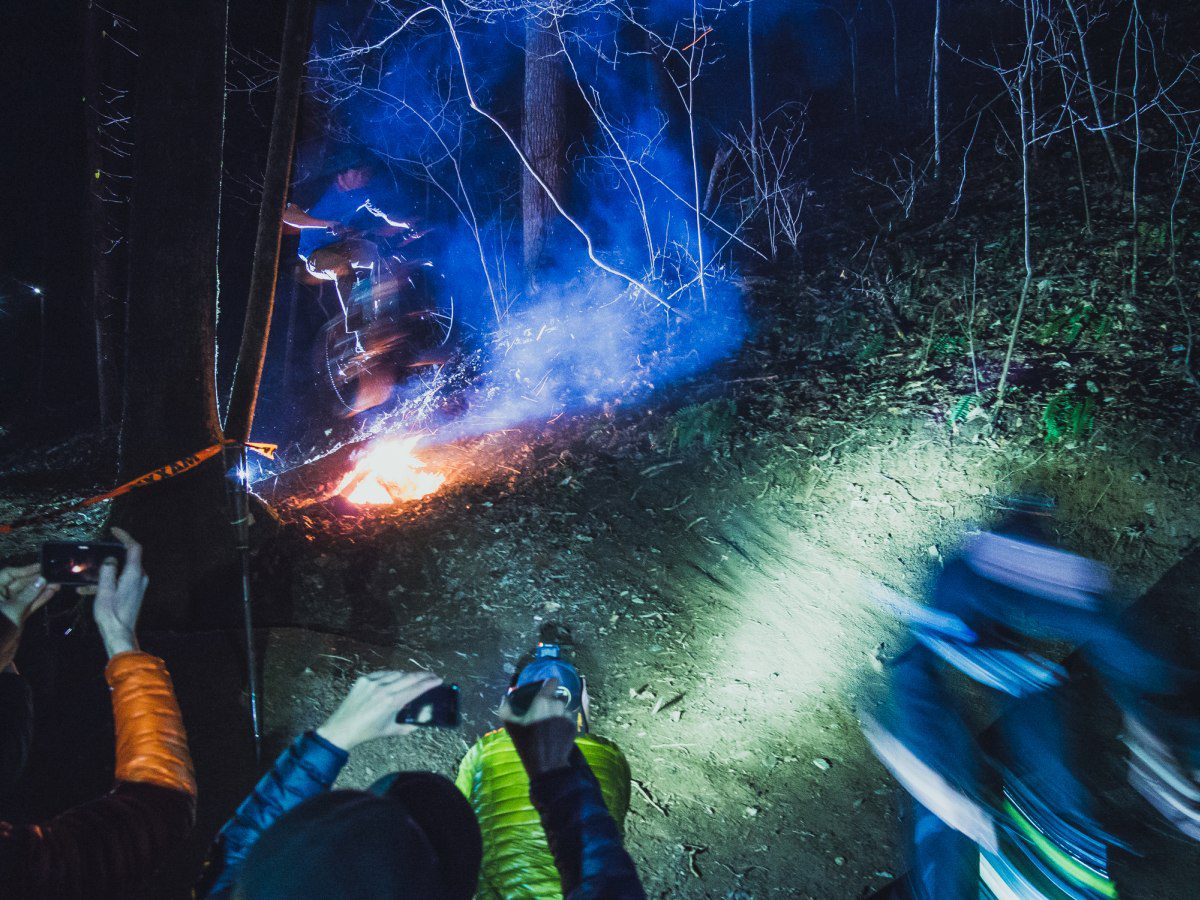
“We’re jumping the fire!” came a voice in the darkness.
“Dropping!” said another.
A train of bright lights started speeding toward us. We were at the Maxxis Trail Summit near Ellijay, Georgia. The train of shredders started jumping over a fire built on the dirt jump line at the Mulberry Gap Mountain Bike Getaway. With beers flowing and lots of singletrack to be ridden, it was a great weekend to be testing tires.
Georgia is home to Maxxis Tires. In the company’s backyard is the Pinhoti Trail, which is part of the Appalachian Trail Network. That network, which had seen some rain and had loose leaves littering its surface, was a good lab for testing traction.
RELATED Scott Scale 720 Plus review
Plus-size tires, having widths between 2.8″ to 3.3″, are a popular choice for riders looking to gain grip and confidence on rougher terrain. With the high volume of such tires, however, you take the risk of slicing larger sidewalls on exposed rocks and trail debris. Maxxis has addressed this issue with its SilkShield technology, specifically in its Rekon Plus. SilkShield is essentially an extension of their current Silkworm insert. Silkworm sits beneath the tread only. SilkShield gives more coverage as it runs from tire bead to tire bead. This setup gives increased protection against slicing and abrasions. Taking into account the lower pressures generally used on plus-size tires, Maxxis has included a butyl-rubber insert near each bead of a tire to guard against pinch flats. This insert acts similarly to foam or air inserts designed to line your rim that also work to prevent impact-based pinch flats.
Knowing you can let the brakes go with these tires on and not worry about slicing your sidewalls makes for a super fun and plush ride. Any small bumps in the trail are easily absorbed by the tire. On bigger hits, the added tire volume allows the tires to conform greatly to uneven terrain. They’ll hold their grip and let the suspension actuate effectively. With a Rekon 2.8″ on the rear and a Minion DHF on the front, there wasn’t much my Pivot Mach 429 Trail couldn’t handle. During climbs, the Rekon rear tire maintained traction even on steep and loose sections. I was also happy to have the added traction of the DHF on the front when tackling aggressive switchbacks that require precise front-tire placement. The DHF might be a bit of an overkill if you do a lot of climbing, but it was great to know my front wheel wasn’t going to wash out pushing uphill through switchbacks.
Stronger sidewalls aren’t the only thing Maxxis has been working on lately. Wheel manufacturers have been playing with wider rim widths in an attempt to give tires a better profile when inflated and better traction and feel when rubber meets the dirt. Many riders are not yet willing to make the jump to plus-size tires or take the weight penalty of riding a full DH tread. For this crowd, generally and enduro-focused bunch, Maxxis has introduced its Wide Trail casing that is optimized for inner rim widths of 35 mm. I tested the Minion DHR II 29 x 2.4 WT while riding a Pivot Switchblade. At 955 g, the DHR is comparable to similar 2.6″-wide tires from other manufacturers, but it is still not a tire you’re going to choose if you enjoy pedalling uphill. Where the DHR really shines is when you point the bike downhill on a steep trail. With large, pronounced side knobs, the DHR gives you loads of confidence when cornering and added assurance when navigating off-camber sections of trail. My favourite aspect of the DHR is its braking capabilities. When you slam on the binders, the DHR and its giant centre block knobs really slow you down in a hurry. It’s great to have that kind of braking performance when conditions are wet or if you’re riding steep, loose terrain. Just ask world champion DH rider Greg Minnaar. He has ridden the DHR tread to several World Cup podiums.
With so much great trail on offer in Georgia, we decided to set out on a long ride and test out the Aggressor, an all around trail tire. We tested the 29 x 2.3 version on the rear of a Pivot Switchblade. The Aggressor has a unique tread pattern that includes advanced knob shaping that Maxxis says creates extra gripping edges. The increased grip was certainly evident when the trail turned up and we started to climb. When climbing through loose leaves, the Aggressor would bite right through and hook up with the dirt even when I was out of the saddle. Our ride down the Bear Creek Trail involved several stream crossings. Some required pedalling through water and over rocks. I was surprised that even when the tires were submerged in water, I still had the confidence to mash the pedals, and then climb up onto the riverbank. My favourite attribute of the Aggressor was its predictability. When screaming into corners, it’s easy to break the rear wheel free of traction and slide through without worrying about washing out or biting and high siding. You can really work your rear wheel around with this tire. But it still seems to bite when you need it to. I can’t wait to put this tire on a hardtail and see how it performs.
